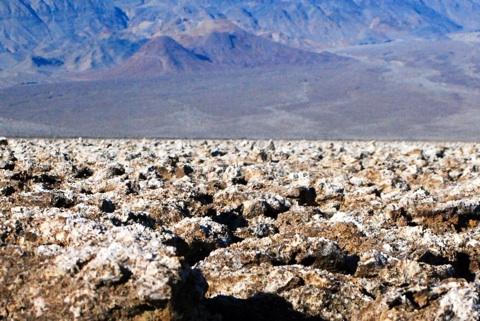128
Year to date maximum temperature, degrees Fahrenheit, at Furnace Creek (July 18)
124
Today’s forecast high temperature for Furnace Creek
123
Yesterday’s high temperature at Furnace Creek
92
Morning low temperature at Furnace Creek
2.23
Inches precipitation at Furnace Creek in last 12 months.
1.39
Inches precipitation at Furnace Creek, year to date.
Postscript: Relief is on the way! Afternoon temperatures are expected to drop into the high hundred teens by the weekend, with lows in the high 80s.
Traveler trivia, no extra charge: During July 1913, Death Valley recorded five consecutive days of 129 degrees or above. On July 10, a still-standing U.S. record 134 degrees was recorded at Greenland Ranch, a Pacific Coast Borax Company property in Death Valley.


 Support Essential Coverage of Essential Places
Support Essential Coverage of Essential Places







Comments
And this is why I will be visiting Death Valley in the late fall or early spring. "High hundred teens" just shouldn't be a phrase used ot refer to weather. Waaaaayyyyyy too hot!
My wife and I were in Death Valley last July (2008). When we got to the hotel at Furnace Creek our car's thermometer read 122 degrees. A couple of observations:
- There was a pretty stiff breeze which we thought would be a good thing. Instead, having 122 degree air blowing on you is like leaning over a hot oven and opening the door. Takes a little getting used to.
- Swimming in the pool at the hotel was like getting in a hot tub. It was only refreshing for the 20 seconds that it took the water to dry off you after getting out.
- When we hiked the Mesquite Flat Sand Dunes at 5:45am it was still 90 degrees
- The place is beautiful, remarkable, stunning, interesting, etc and if your car is in any kind of normal state of repair you should not have problems visiting in the summer. Just bring a bunch of water and plan to do any hiking in the early morning.
It is an unforgettable place to visit and if I lived closer I would go back in a heartbeat.
A stiff breeze sure won't do you any good when it gets that hot. Normal skin temperature is 91 degrees, plus or minus about two degrees, so any time the ambient air temperature is hotter than that, the breeze will add heat to your body. Because summer evaporation rates are extremely high at Furnace Creek (as you've pointed out), evaporative cooling can work very well. Comfort-wise, it'd make more sense to stay out of the pool and just use the pool water to soak your clothing and a towel-turban for your head. The downside is that wet fabric dries amazingly fast in the hot breeze, so keeping that stuff wet will keep you busier than a one-armed paper hanger.
The hottest day we lived there was 127. Yes, its hot but your learn to adapt and to do things in the cooler hours of the morning. I will take the heat of Death Valley over the cold of North Dakota (lived there too) any day!
People living in North Dakota are subjected to very high annual physioclimatic stress (cumulative stress) because it's not only very cold and windy up there in the winter, but also quite hot in the summer. I've never calculated the annual stress or the proportional cumulative stress for Furnace Creek (though I did that sort of thing in a former lifetime), but I'd like to get those numbers and then compare them with the corresponding values for a North Dakota station.
My fiance lives in Death Valley (which was my winter park). I love it there in the winter but I went to visit him just a few weeks ago and it's not so nice in the summer! I've been in high temps before...it was 110 in Zion just last week, but there is no relief from the heat there and I think that's what causes so many problems. Not a lot of shade, no major water source, and even the wind is hot!
On a side note a Korean visitor passed away from the heat just the other day
Ranger Holly
http://web.me.com/hollyberry
Physioclimatic stress...that's a new term for me, Bob. I'll have to look into that some more. I've always marveled at some numbers, but never put a name on it. For example, the interior continental area (geographically centralized on the North American landmass) of North Dakota and some of the surrounding states tend to have the among the highest record highs (excluding only California and Arizona, maybe Nevada) and the lowest record lows (excluding only Alaska). While our tropical state Hawaii has the lowest record high (excluding perhaps Alaska?) and highest record low. So our Hawaiian friends endure comparatively low physioclimatic stress?
@ RangerLady: The Korean visitor you mentioned, a 52-year old woman, was one of six South Korean nationals who ran afoul of heat stress problems last Sunday afternoon while walking in Death Valley's Mesquite Dunes (near Stove Pipe Wells). It was 123 degrees at the time, and ground temperatures were closer to 140 degrees.